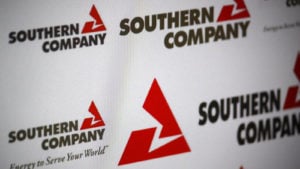Let’s talk about utility stocks.
Companies that grow dividends during periods of economic expansion are very common. The more difficult endeavor is to grow the dividend during times of economic hardship. Demand often falls in many areas as consumers and companies reduce their spending in recessions. Customers tend to keep their spending to a minimum in order to stay afloat during these times.
It takes a strong business model to thrive in recessions. One of the best market sectors for high dividend yields and stable dividends (even during recessions) is the utility sector. Utility stocks provide electricity, gas and water that consumers and businesses need to perform basic functions. Customers might cut back in other areas, but are very likely to continue to pay their utility bills.
In addition, utility companies operate in a highly regulated industry and have to be approved for rate increases before they can charge customers more for services. The result is predictable earnings and dividends for many well-run utilities and utility stocks.
Here are three utility stocks to buy for safe income.
Utility Stocks to Buy: Consolidated Edison (ED)

Consolidated Edison consists of several subsidiaries that delivers gas and steam, primarily to the New York area. The company has nearly 3.5 million electric customers in New York City and 1.1 million gas customers in Manhattan, the Bronx and Westchester County. Consolidated Edison has a market capitalization of $27 billion and generated revenue in excess of $12 billion in 2020.
The company’s earnings per share fell less than 10% from 2007 to 2009, a resilient performance in the face of steep market declines. Consolidated Edison’s dividend grew at a modest rate of 1.7% over this period, but this has been a common theme for the company.
Still, the stock had an average dividend yield of 3.9% over the last decade. Today, the yield stands at 4%, which compares very well to both the long-term average yield and the 1.3% average yield for the S&P 500 index.
Consolidated Edison’s dividend had a compound annual growth rate of just 2.5% from 2011 through 2020. Shareholders received a raise of 1.4% for the March 15 payment. Shareholders are trading higher yields for lower growth, which isn’t uncommon for utility stocks.
Consolidated Edison has an extensive dividend growth track record, numbering 47 years. This makes Consolidated Edison a member of the Dividend Aristocrats list, a group of 65 stocks in the S&P 500 with at least 25 consecutive years of dividend increases.
Joining this exclusive company is likely to happen as Consolidated Edison has a reasonable payout ratio. The company has a projected payout ratio of 73% based on the annualized dividend of $3.10 and our expectation for EPS of $4.25. This is near the 10-year average payout ratio of 67%. This high of a payout ratio likely creates a ceiling for dividend growth in the near-term, but we believe that Consolidated Edison will do what it has done for nearly five decades, continue to raise its dividend.
Duke Energy (DUK)

Duke Energy is one of the largest energy providers in the country. The company has 7.6 million electric customers in six U.S. states, including Florida and Ohio, and 1.6 million gas customers in five states, including North Carolina and South Carolina. Duke Energy produced revenue of approaching $24 billion last year and is valued at $82.2 billion today.
Duke Energy’s EPS fell just 5.8% during the last recession while shareholders saw dividends increase by more than 9% during this time. As with Consolidated Edison, Duke Energy’s dividend has grown at a low rate. The last decade has seen a compound annual growth rate of just 2.5%.
The company announced a dividend increase of 2.1% for the upcoming Sept. 16 payment date. Duke Energy has the shortest of the names discussed here, but now stands at 11 consecutive years.
Shareholders have been paid handsomely to own the stock as Duke Energy’s average yield is 4.5% since 2011. Shares offer a yield of 3.7% today, lower than the long-term average, but almost three times the average yield of the market index.
One reason behind Duke Energy’s low dividend growth over the years is its dividend payout ratio is elevated. The 10-year average payout ratio is nearly 80%. With a new annualized dividend of $3.94 and EPS estimate of $5.17, the company has an expected payout ratio of 76%.
Utility Stocks to Buy: Southern Company (SO)

Southern Company delivers electricity to more than 4 million customers in Alabama, Georgia and Mississippi. The company also supplies gas to 4.3 customers in six states, including Georgia, Illinois and Virginia. Southern Company has a market capitalization of $69 billion and generated revenue of more than 420 billion last year.
Southern Company bucked the trend of declines in the last recession, instead seeing its EPS grew 1.8% from 2007 to 2009. This also takes into account an additional 56 million shares that were added to the share count by the end of 2009, meaning that earnings growth would have likely been even higher. This is an especially impressive feat considering how difficult that period of time was for the vast majority of companies. Shareholders saw their dividends increase by more than 8% over the course of the Great Recession.
The company’s dividend growth rate was 3.1% per year over the last decade, the highest growth rate among the utility stocks discussed in this article. The company raised its dividend by this exact figure for the June 7 distribution. Southern Company now has 20 consecutive years of dividend growth, putting it ever closer to reaching Dividend Aristocrat status.
Southern Company yields 4%, which is still quite generous in comparison to that of the S&P 500 index. The company pays an annualized dividend of $2.64. With expected EPS of $3.33 for this year, this works out to a projected payout ratio of 79%, which indicates a safe dividend.
On the date of publication, Bob Ciura did not have (either directly or indirectly) positions in any of the securities mentioned in this article. The opinions expressed in this article are those of the writer, subject to the InvestorPlace.com Publishing Guidelines.
Bob Ciura has worked at Sure Dividend since 2016. He oversees all content for Sure Dividend and its partner sites. Prior to joining Sure Dividend, Bob was an independent equity analyst. His articles have been published on major financial websites such as The Motley Fool, Seeking Alpha, Business Insider and more. Bob received a bachelor’s degree in Finance from DePaul University and an MBA with a concentration in investments from the University of Notre Dame.
